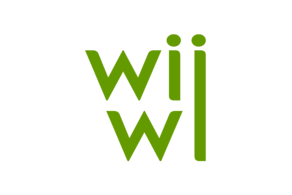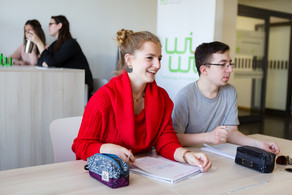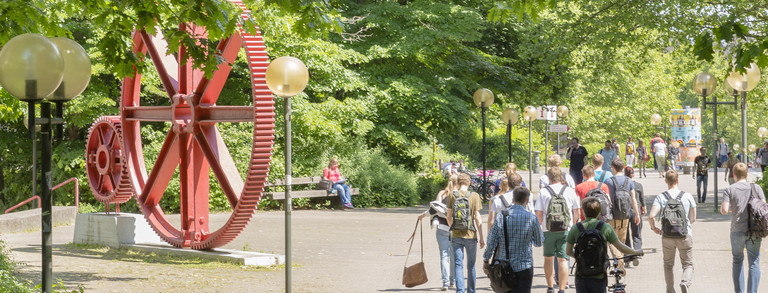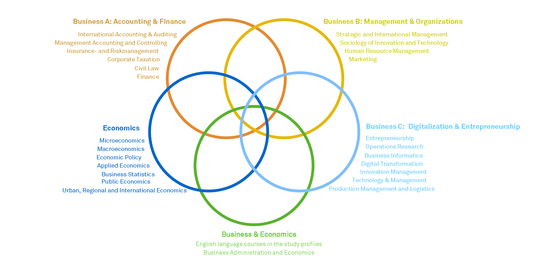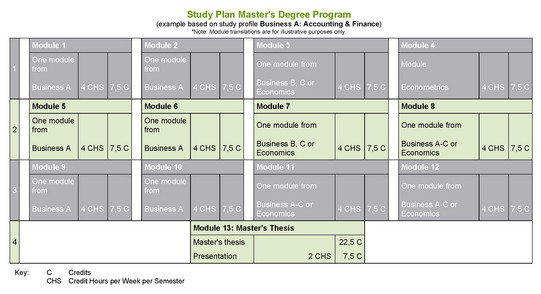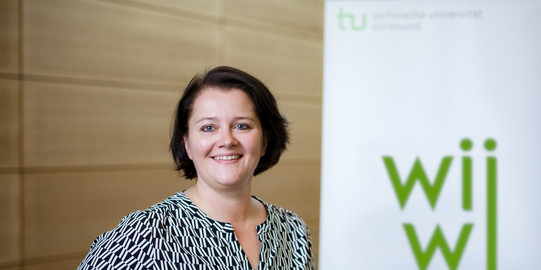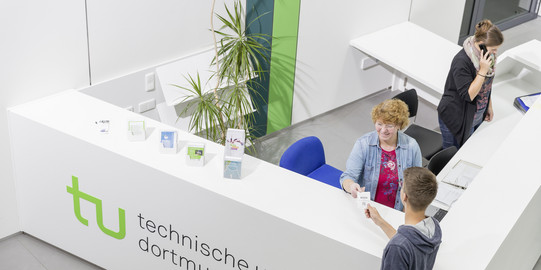Master Business Administration and Economics
The degree program Master Business Administration and Economics is aimed at those Bachelor's graduates who have completed their studies with particular success and would like to take on senior management tasks as part of their professional activities or who are planning to do a doctorate. This may also include graduates of related courses such as industrial engineering, business informatics or business mathematics or of another university course with a minor in economics.
The master's degree program can be seamlessly connected to the bachelor's degree program, but can also be taken up after a period of working in a chosen career field. Students can begin their studies in either the summer or winter semester. In addition to a good grade in their bachelor's degree, further admission requirements apply. The Master's program extends over four semesters and offers the possibility of specialization in a specific professional field. Master's students can choose between five study profiles, each with four to six subjects.
The Accounting & Finance specialization provides you with a career-oriented education for jobs in finance and banking, internal and external accounting, auditing and tax consulting, as well as insurance companies.
Management & Organizations prepares you for a variety of tasks in strategic management, marketing and market research, human resources as well as management consulting.
Specializing in Digitalization and Entrepreneurship leaves you perfectly equipped for a career in technology and innovation management for start-ups and established companies, (IT) project management and consulting, but also in production management, logistics or in the field of digitalization and information management.
The Economics specialization offers numerous paths to working in (central) banks, ministries and associations as well as policy consulting and research institutes.
Business and Economics allows you to take advantage of the English-language courses in the different specializations to tailor your master's program to your future career plans.
All specializations allow students to further develop their research interests by undertaking a doctorate following the master's program.
The central idea of integrative learning remains implemented in the master's program. Students choose at least two modules outside their study profile. Further elective options are available. As in the Bachelor's program, great importance is attached to the acquisition of key qualifications. The teaching of methodological, social and self-competence takes place primarily through case studies and seminars.
From winter semester 2024/2025, students can enroll in and transfer to the Master's degree program in Business Administration and Economics throughout the year.
If you have any further questions, please feel free to contact the department's Management Studies and Teaching or the Examinations Office.





